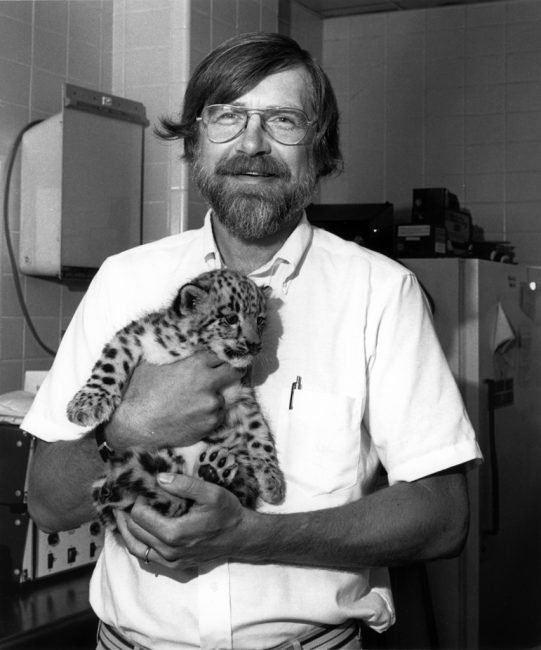
August 5, 2021
A Tradition of Excellent Veterinary Care: Emil Philip Dolensek
- as seen by -
 Paul P. Calle
Paul P. Calle
The Wildlife Conservation Society’s (WCS) Bronx Zoo opened to the public on November 8, 1899. Dr. Emil Philip Dolensek, a 1967 graduate of the Michigan State University College of Veterinary Medicine, joined the Bronx Zoo in 1969 after a short time in small animal practice in Stamford, Connecticut where he also provided voluntary veterinary care for the animals at the Stamford Museum and Nature Center. He was the sixth WCS Chief Veterinarian and the first to hold that title.
The original Bronx Zoo hospital that opened in 1916 was perhaps the first purpose-built zoo hospital in the world and the only one in the United States for the next 11 years. Under Dolensek’s leadership in the early 1970s, enhanced capabilities of the animal hospital laboratories were developed for histopathology, hematology, microbiology, physiology, and parasitology. Associated with these developments were a number of renovations to the hospital facilities including additions of medical equipment for conducting these analyses and for monitoring anesthesia. These enabled more comprehensive preventive medical programs including quarantine, and as a result of collaborations with professional medical consultants, advanced our understanding of zoo and aquarium animal nutrition, comparative pathology, parasitology, and ophthalmology, all of which consequently improved our animal healthcare. A completely new Bronx Zoo Animal Health Center designed by Dolensek opened April 30, 1985, replacing the original hospital that had operated continuously for 69 years. The Animal Health Center was the first of a new generation of zoo hospitals with extensive enhancements to veterinary care and groundbreaking advances in zoo hospital design. It was 10 times larger than the original hospital and had facilities to quarantine new animal arrivals and care for ill animals (the animal wards alone in the new hospital were larger than entire original hospital); the ability to bring larger animals to the hospital for procedures; capabilities for hand-rearing animals when necessary (Dr. Dolensek with a snow leopard cub above); a surgery suite; radiology (x-ray) room; pharmacy; clinical, microbiology, nutrition, and reproductive laboratories; pathology facilities, and space for research activities. These greatly increased the clinical, pathology, and research capacities of the department including incorporation of endoscopy and ultrasound equipment. It also provided enhanced capabilities to deliver veterinary care for the city zoos, with the Central Park Zoo the first to open under WCS management in 1988.
Department personnel developments during Dolensek’s tenure included hiring an assistant veterinarian, clinical and pathology veterinary residents in conjunction with Manhattan’s Animal Medical Center funded through private donations, and formal veterinary student externships.
Programmatic developments included establishing a Reproductive Studies Unit; formal Pathology Department; Nutrition Department; expanding the veterinary care programs for the Bronx Zoo, New York Aquarium, Central Park Zoo, and the Wildlife Survival Center on St. Catherine’s Island, Georgia, all managed by WCS; and creating a Field Veterinary Program.
The Reproductive Studies Unit was established in 1981 to develop and determine aspects of zoo animal reproductive endocrinology and physiology, gorilla fertility investigations, hormonal pregnancy diagnosis, and a semen bank. The program closely collaborated with the Population Council of Rockefeller University. An embryo transfer from a gaur, a wild member of the cow family, to a domestic Holstein cow resulted in a successful birth of a gaur calf by the Holstein cow at the Bronx Zoo. Artificial insemination of gemsbok, an antelope species, resulted in births of calves at St. Catherine’s Island.
A Pathology Department staffed with a full-time veterinary pathologist was established in 1984. This replaced use of consulting pathology contributions by physicians, the New York Medical School, and the veterinary pathology program at the Animal Medical Center. The department provided for the first time comprehensive pathology examinations by WCS staff of our animals. The information obtained through this enhanced necropsy assessment directly contributed to improved animal care.
Also under Dolensek’s leadership a Nutrition Program was established in 1986 with the hiring of a full-time staff animal nutritionist and later a nutrition technician. A Nutrition Laboratory was established that included analytic equipment and capabilities for measuring nutrient levels in blood, tissue, and diets. Seminal work of the department included determining that our blesbok were affected by a copper deficiency and, through work with the pathologists, the critical and previously underappreciated role that vitamin E plays in the health and reproduction of zoo birds and hoofstock, and that deficiency in dietary vitamin E could both shorten lifespans and limit successful births and hatching. The program also collaborated with other zoos and conservation organizations and resulted in multiple scientific publications and presentations.
Enhanced veterinary care was provided for our animals, not only at the Bronx Zoo, but also for the New York Aquarium’s beluga whales and dolphins, at the Central Park Zoo, and at the Wildlife Survival Center on St. Catherine’s Island. These advances included improved programs for preventive medical treatments, quarantine, disease surveillance, and continued developments in anesthesia drugs and delivery methods. The way in which pathology and clinical samples were organized and tracked was improved, and record-keeping was prioritized with a new record system that included, for the first time, computerized data summaries. Dolensek authored many popular 1,2 and scientific publications and presentations, communicating his work with both the general public and professional colleagues.
During Dolensek’s tenure, the veterinary care for animals in our zoos and aquarium also led to involvement of WCS veterinarians in field conservation programs and projects. Beginning in the early 1980’s, Dolensek and his staff began supporting both zoo and aquarium field projects, and those of WCS’s global conservation programs. This included work with sharks in Florida, beluga whales in Canada, hoatzin in Venezuela, captive and wild giant pandas in China, okapi in the Democratic Republic of Congo, hippopotamus in Africa, and stranded dolphins, whales, and sea turtles cared for at the New York Aquarium. These efforts culminated in the creation of a Field Veterinary Program in 1989, shortly before Dolensek’s death.
Dr. Dolensek was a very hands-on clinician throughout his career, and he bridged the transition of zoological medicine and surgery from pragmatic animal care to the advanced and specialized discipline that is it today. He was awarded the centennial gold medal of the New York State Veterinary Medical Society for his contributions to the field of zoological medicine and was a past president of the American Association of Zoo Veterinarians (AAZV). After his untimely death on February 7, 1990, the AAZV established the Emil Dolensek Award: “The Emil Dolensek Award is an honor presented to a past or present member of the AAZV in appreciation for exceptional contributions to the conservation, care, and understanding of zoo and free-ranging wildlife reflecting Emil Dolensek’s commitment to these purposes. Emil was in the prime of his life and his career, and this award recognizes similar individuals that have advanced the profession and served to link the related disciplines of zoo and wildlife medicine.” The first Emil Dolensek Award was given in 1991.
He also posthumously received Michigan State’s College of Veterinary Medicine’s Distinguished Veterinary Alumnus Award in 1995.
Dolensek exemplified the proud tradition of WCS Chief Veterinarians providing excellent veterinary care for our animals and being leaders in the zoological health field, setting an example for other zoos of our high standards of zoo and aquarium animal health care.
EDITOR’S NOTE: This post continues a series on the history of our chief veterinarians. WCS was founded as the New York Zoological Society in 1895, and the flagship Bronx Zoo opened in 1899.
Additional Information:
1 Doctor in the Zoo Bruce Buchenholz. Viking Press 1974.
2 A Practical Guide to Impractical Pets. Co-written with his wife Barbara Burn. Viking Press 1976.
https://en.wikipedia.org/wiki/Emil_Dolensek
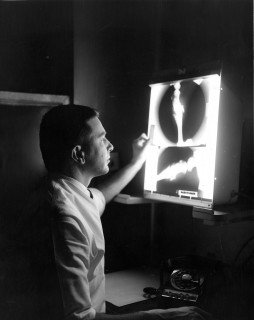
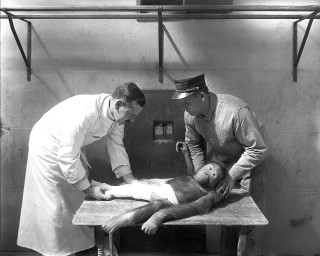
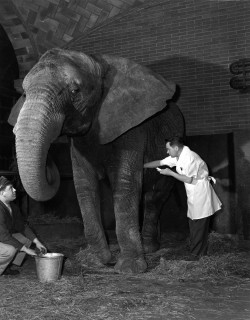
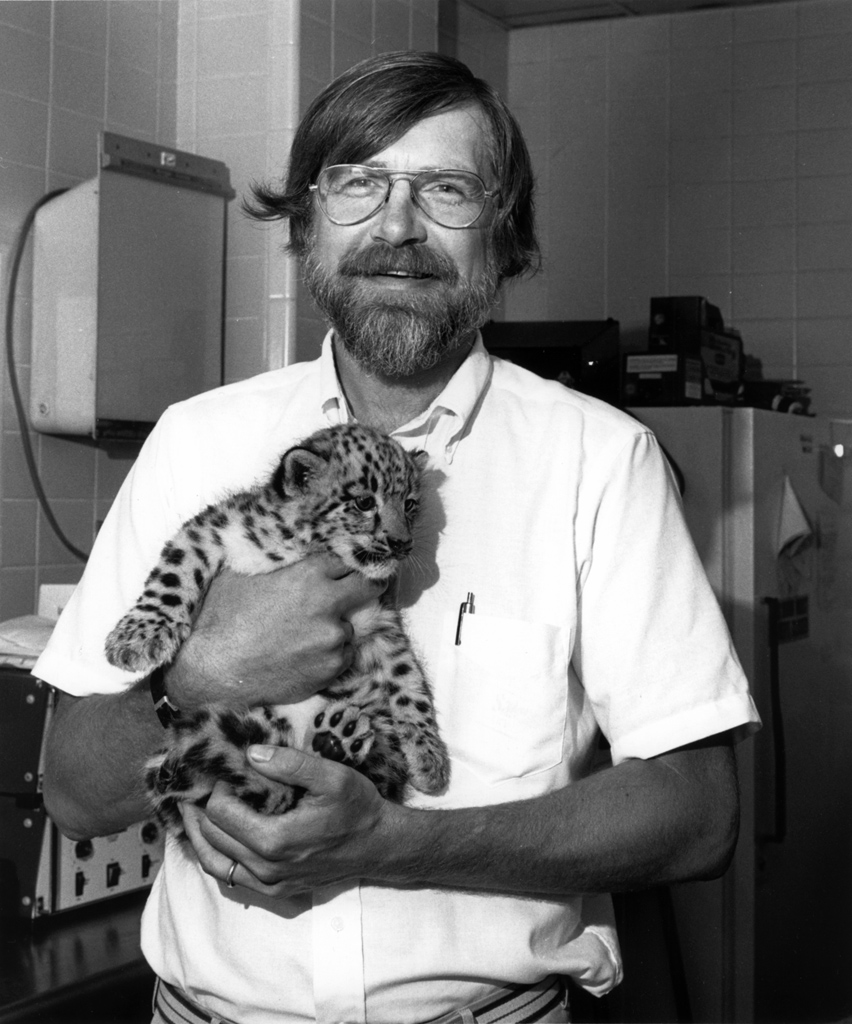
Leave a Comment
Jenny Baum
July 25, 2023 at 5:30 am
I was only 14 and watched Emil perform the c-section on that gorilla! Though out high school and college I worked at his pound ridge vet clinic. So fortunate I was